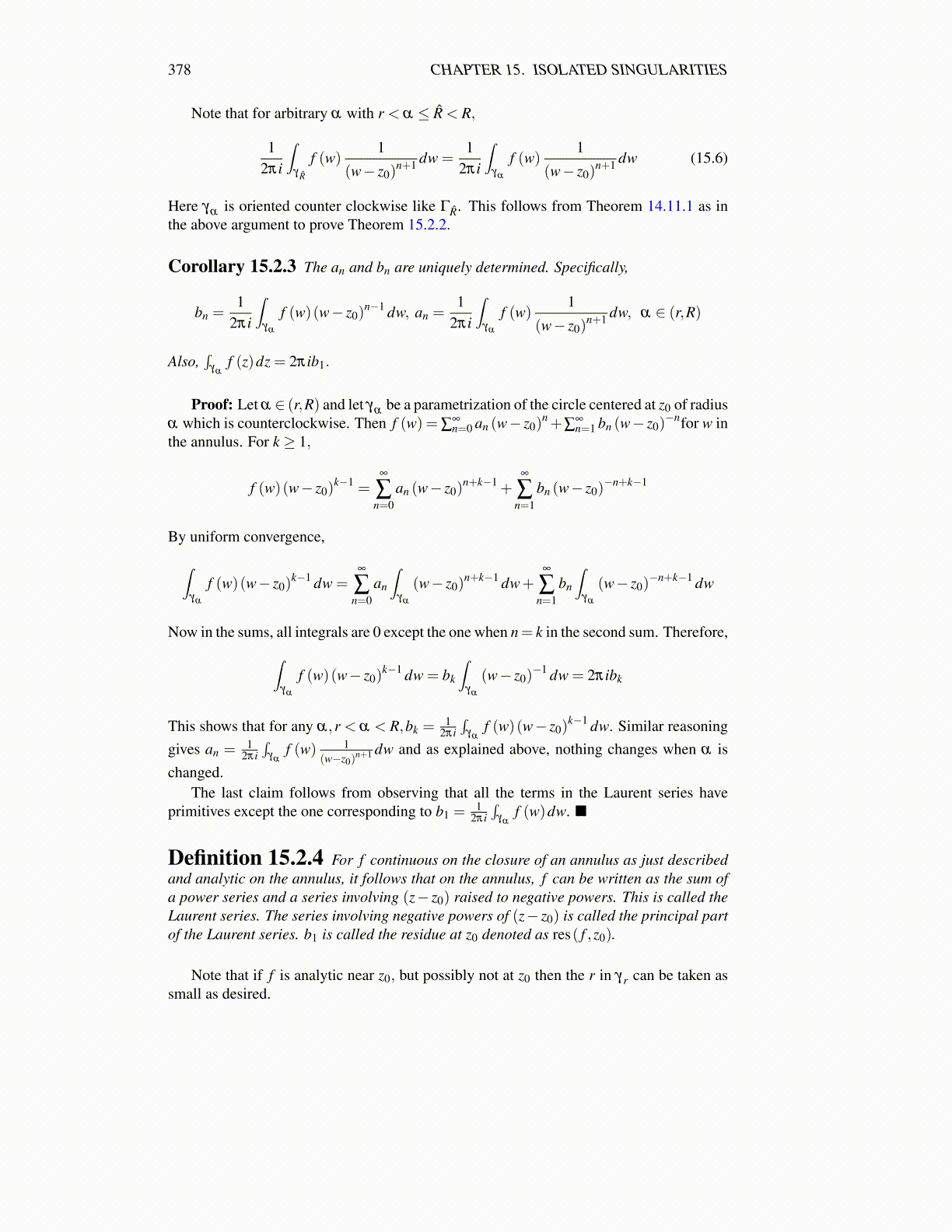
378 CHAPTER 15. ISOLATED SINGULARITIES
Note that for arbitrary α with r < α ≤ R̂ < R,
12πi
∫γ R̂
f (w)1
(w− z0)n+1 dw =
12πi
∫γα
f (w)1
(w− z0)n+1 dw (15.6)
Here γα is oriented counter clockwise like ΓR̂. This follows from Theorem 14.11.1 as inthe above argument to prove Theorem 15.2.2.
Corollary 15.2.3 The an and bn are uniquely determined. Specifically,
bn =1
2πi
∫γα
f (w)(w− z0)n−1 dw, an =
12πi
∫γα
f (w)1
(w− z0)n+1 dw, α ∈ (r,R)
Also,∫
γαf (z)dz = 2πib1.
Proof: Let α ∈ (r,R) and let γα be a parametrization of the circle centered at z0 of radiusα which is counterclockwise. Then f (w) = ∑
∞n=0 an (w− z0)
n+∑∞n=1 bn (w− z0)
−nfor w inthe annulus. For k ≥ 1,
f (w)(w− z0)k−1 =
∞
∑n=0
an (w− z0)n+k−1 +
∞
∑n=1
bn (w− z0)−n+k−1
By uniform convergence,
∫γα
f (w)(w− z0)k−1 dw =
∞
∑n=0
an
∫γα
(w− z0)n+k−1 dw+
∞
∑n=1
bn
∫γα
(w− z0)−n+k−1 dw
Now in the sums, all integrals are 0 except the one when n= k in the second sum. Therefore,∫γα
f (w)(w− z0)k−1 dw = bk
∫γα
(w− z0)−1 dw = 2πibk
This shows that for any α,r < α < R,bk =1
2πi∫
γαf (w)(w− z0)
k−1 dw. Similar reasoninggives an = 1
2πi∫
γαf (w) 1
(w−z0)n+1 dw and as explained above, nothing changes when α is
changed.The last claim follows from observing that all the terms in the Laurent series have
primitives except the one corresponding to b1 =1
2πi∫
γαf (w)dw. ■
Definition 15.2.4 For f continuous on the closure of an annulus as just describedand analytic on the annulus, it follows that on the annulus, f can be written as the sum ofa power series and a series involving (z− z0) raised to negative powers. This is called theLaurent series. The series involving negative powers of (z− z0) is called the principal partof the Laurent series. b1 is called the residue at z0 denoted as res( f ,z0).
Note that if f is analytic near z0, but possibly not at z0 then the r in γr can be taken assmall as desired.